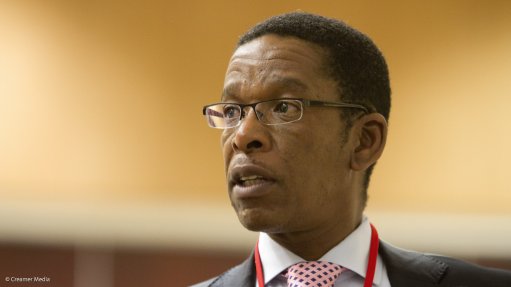
Thembani Bukula
Photo by: Duane Daws
The National Energy Regulator of South Africa (Nersa) expects to make a determination on Eskom’s Regulatory Clearing Account (RCA) balance submission in either April or May, but insists that there will be no tariff implications for consumers before April 1, 2015.
The submission relates specifically to the second multiyear price determination period (MYPD2), covering the period from April 1, 2010, to March 31, 2013. Eskom is currently operating under the MYPD3 tariff framework, through which Nersa granted the utility five yearly increases of around 8% for the period beginning April 1, 2013, through to March 31, 2018.
Full-time regulatory member for electricity Thembani Bukula refused to divulge the size of the RCA balance submitted by Eskom, but confirmed with Engineering News Online that the balance was submitted for reconciliation in around October 2013.
An intense review, including an assessment of the prudency of Eskom’s over expenditure on items ranging from diesel and coal, through to its purchases from independent power producers, had been undertaken.
Bukula noted that additional documents had been requested during the course of the evaluation, which were all submitted by the end of January 2014.
In March, Nersa’s electricity subcommittee concluded its assessment and the recommendations would now be considered by the Energy Regulator, probably at its next meeting towards the end of April. But the process could be delayed to the May meeting.
Eskom had indicated previously that it planned to make more intensive use of the RCA in an effort to close the gap between actual revenue and costs when compared with revenue and costs allowed by Nersa under MYPD2 and MYPD3.
Following the MYPD3 determination, Eskom announced that it faced a R225-billion financial shortfall as a result of it being granted increases of 8% between 2013 and 2018 as compared with the 16% it had sought.
The utility also indicated that it planned to claw back ‘prudently incurred’ expenses through RCA submissions to Nersa. It was, thus, likely that Eskom would prepare further RCA balance submissions for the MYPD3 period, possibly on a yearly basis.
The RCA balance submission for the MYPD2 was, thus, seen as a test case for both Nersa and Eskom as to whether the mechanism – approved as part of the tariff methodology – offered a credible way for dealing with variations that arose during the multiyear determination periods. In the past, Eskom had moved to reopen Nersa’s determination, based on an argument that the assumptions underlying its decisions had changed materially.
Bukula noted that the RCA mechanism had already been partially deployed when the decision was made to decrease Eskom’s 2012/13 tariff increases from 25% to 16%. However, this time around, Eskom was applying for an upward revision to tariffs.
Under the rules of the methodology, if the RCA balance was less that 2% no adjustment would be made in the subsequent year. If it was between 2% and 10%, Nersa could approve an adjustment without further public consultation. However, should the balance be higher than 10%, a consultation process would have to be reopened and Nersa also had the right to determine a reasonable phasing-in period.
“Once the Energy Regulator approves the RCA balance, we will provide the reasons for the decision. But the process followed is largely dictated by the MYPD methodology rules for assessing prudency and efficiency of costs,” Bukula outlined.
He also stressed that, if anyone was unhappy with the decision of the Energy Regulator, they could approach the High Court for a review.